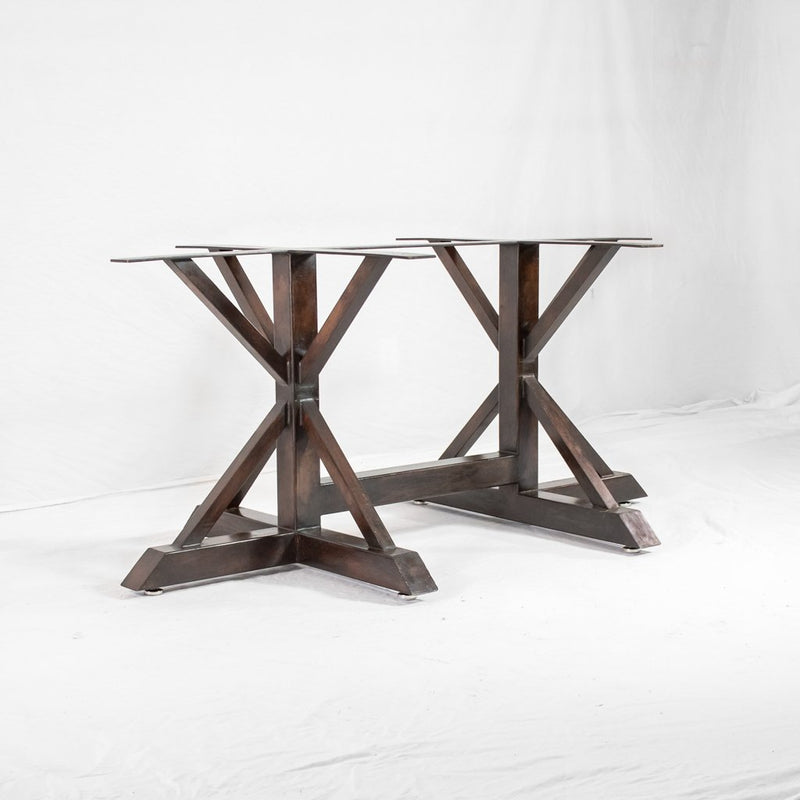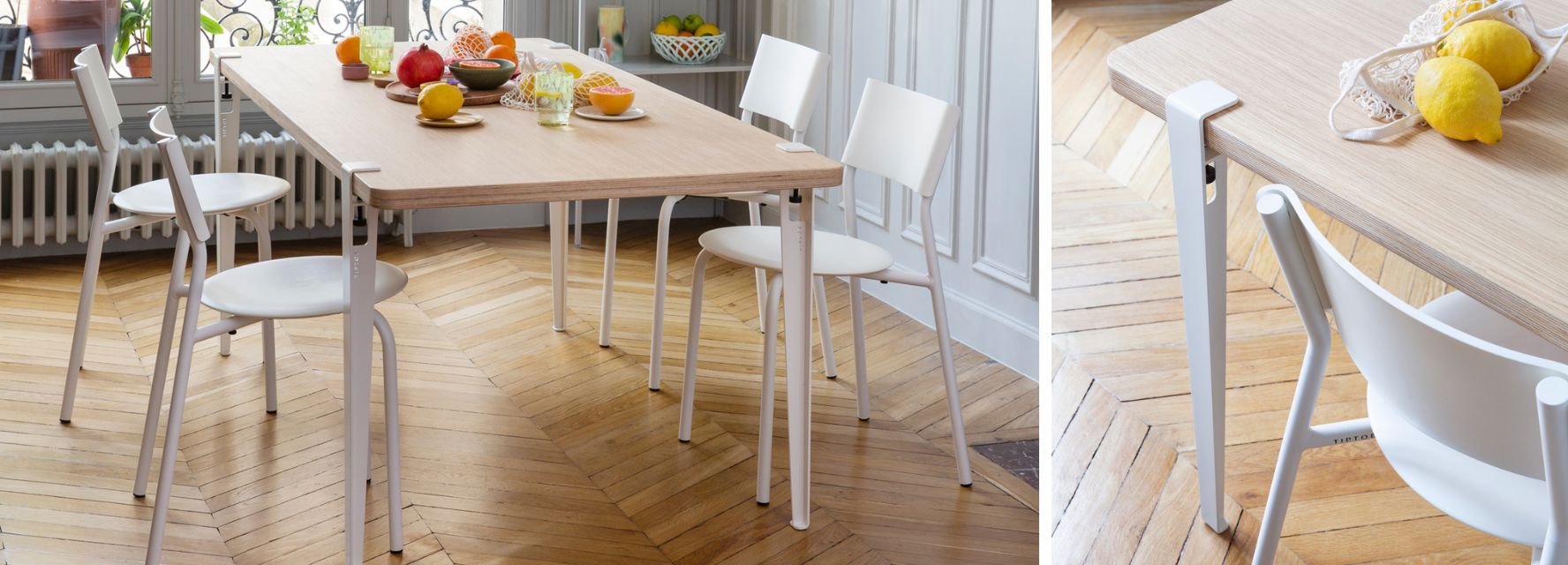From Traditional to Modern: Find the Ideal Eating Space Table Legs for Your Design
The choice of eating area table legs plays an essential role in specifying the total character of your space, linking the space in between typical workmanship and contemporary appearances. While traditional designs such as cabriole and transformed legs stimulate a feeling of ageless refinement, contemporary styles like hairpin and geometric options provide a possibility for striking visual rate of interest. Reviewing the right balance between these styles needs a nuanced understanding of your existing design and individual taste. As you think about these components, the inquiry remains: just how can you flawlessly incorporate these diverse leg designs to develop a harmonious eating experience?
Recognizing Table Leg Styles
The variety of eating space table leg designs can considerably influence both the visual appeals and functionality of the room. Each leg design adds distinct visual aspects and practical features, accommodating diverse style preferences and use demands. Comprehending these styles is critical for selecting the right eating table that aligns with your overall interior design vision.
As an example, tapered legs offer a clean, classic appearance that can enhance a room's elegance, while stand bases supply security and make the most of legroom, making them optimal for smaller sized rooms. Barrette legs, a characteristic of mid-century contemporary layout, introduce a commercial style, enabling an airy, open feel. Similarly, trestle legs stimulate rustic beauty, giving durable support and a feeling of timelessness.
Wood legs can bring warmth and texture, whereas metal alternatives often communicate a streamlined, modern ambiance. Inevitably, understanding table leg designs is essential for creating a cohesive eating area that mirrors personal style while ensuring usefulness and comfort.
Standard Table Leg Options
When selecting eating room table legs, conventional alternatives usually personify ageless sophistication and craftsmanship. These layouts show a rich heritage and a dedication to top quality, making them excellent for those who appreciate timeless aesthetics.
One of one of the most renowned conventional leg styles is the cabriole leg, defined by its stylish rounded shape. This style usually includes decorative makings and is most typically located in Queen Anne and Chippendale furniture. One more popular choice is the turned leg, which boasts a series of smooth, rounded forms that give a timeless appearance while preserving security.
Additionally, the straight leg, while basic, uses a unadorned and strong framework that can mix perfectly with a variety of tabletop designs. For those attracted to ornate outlining, claw-and-ball feet legs evoke a feeling of majesty and can act as a magnificent prime focus in any kind of dining area.
Finally, pedestal bases, although not strictly legs, supply an alternative conventional option that permits adequate legroom and can be wonderfully sculpted. Each of these traditional leg styles adds to the total setting of a dining-room, weding function with aesthetic allure.

Modern Table Leg Styles
Modern table leg layouts provide a varied series of styles that emphasize clean lines and innovative materials. These designs frequently focus on capability while working as striking prime focus within a dining space. Minimal aesthetics are widespread, with legs crafted from materials such as metal, glass, and engineered wood, which add to a ventilated and contemporary feeling.
One popular style is the hairpin leg, characterized by its slim, conical structure that provides stability without overwhelming the tabletop (dining room table legs). This design is typically discovered in mid-century modern-day furnishings and can easily match numerous table shapes. An additional pattern is making use of geometric forms, where legs may tackle angular or asymmetrical kinds, including visual interest and a touch of artistry

Mixing Designs for One-of-a-kind Areas
Frequently, property owners seek to create one-of-a-kind dining areas that mirror their personal style by mixing various style components. This method permits the consolidation of diverse appearances, causing an unified yet distinct atmosphere. As an example, combining a rustic wood table with smooth, modern metal legs can produce an appealing contrast that elevates the space's overall allure.
Furthermore, incorporating vintage table legs with contemporary tabletops can stimulate a feeling of history while preserving a contemporary perceptiveness. Such combinations not just showcase individual preference however likewise encourage imagination, allowing homeowners to curate an area that feels both personal and welcoming.
Color plays an important function in this mixing procedure; picking table legs that enhance or contrast with the existing shade plan can enhance visual interest. Whitewashed legs can soften the daring of a dark table surface area, producing a balanced visual.
Tips for Choosing the Right Legs
Picking the right table legs is crucial for attaining both functionality and aesthetic allure in your eating space. Begin by thinking about the total design of your space. Standard settings gain from legs that feature complex makings or transformed styles, while modern rooms may require sleek, minimal styles.
Next, evaluate the elevation and stability of the legs. dining room table legs. Conventional table vary in between 28 to 30 inches in elevation, so guarantee the legs match this dimension for comfort. click for more info In addition, durable materials, such as hardwood or steel, can enhance security and durability
Examine the leg shape also-- choices consist of straight, tapered, or pedestal styles. Straight legs provide a timeless appearance, while conical legs can include a touch of beauty. Pedestal bases offer adequate legroom and are suitable for smaller sized rooms.
Verdict
In recap, selecting the ideal dining-room table legs calls for careful consideration of both modern and traditional styles. Traditional choices such as cabriole and transformed legs use timeless style, while contemporary styles like hairpin and geometric shapes provide a modern touch. By harmonizing leg design, height, and product with the total decoration, a cohesive and inviting atmosphere can be achieved. Eventually, the chosen table legs must reflect the wanted visual, improving the dining experience within the room.
The selection of eating area table leg designs can significantly influence both the looks and capability of the space. Eventually, comprehending table leg designs is necessary for creating a cohesive eating location that mirrors individual style while guaranteeing practicality and comfort.One of the most famous standard leg designs is the cabriole leg, identified by its stylish curved form. Straight legs supply a traditional look, while tapered legs can include a touch of elegance.In recap, selecting the optimal eating room table legs calls for careful factor read what he said to consider of both contemporary and standard styles.
Comments on “Simple Steps to Replacing Old Dining Room Table Legs with New Ones”